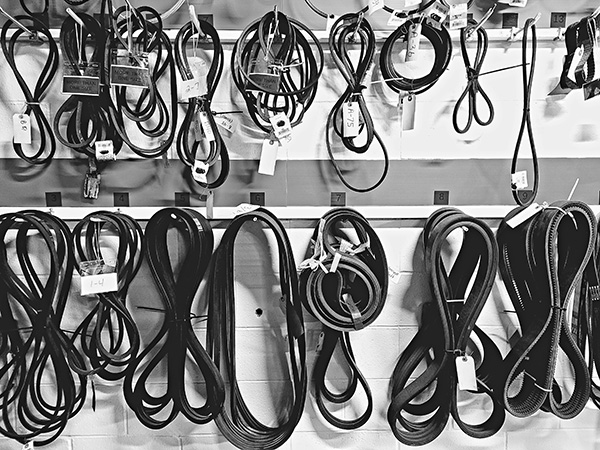
While timing belts and serpentine belts might seem similar at first glance—they’re both rubber belts that help your engine run—they serve very different purposes. Knowing the difference can help you better understand your vehicle’s maintenance needs and avoid costly engine damage. Here's how these two belts work, why they're important, and what signs might indicate trouble.
What Is the Timing Belt
The timing belt is a critical internal engine component that synchronizes the rotation of the crankshaft and camshaft. This precise timing ensures that your engine’s valves open and close at exactly the right moment during the intake and exhaust strokes. If the timing is off—even by a small amount—it can seriously affect engine performance, and in interference engines, it can lead to catastrophic internal damage.
Timing belts are typically located behind protective covers and aren’t easily visible. Because of their role in engine timing, they need to be replaced at specific intervals—often between 60,000 and 100,000 miles, depending on the manufacturer. If a timing belt fails, the engine will likely shut down immediately.
What the Serpentine Belt Does
The serpentine belt, also known as a drive belt, is a long, winding belt that powers external engine components like the alternator, power steering pump, air conditioning compressor, and water pump (in some vehicles). It’s called “serpentine” because it snakes around multiple pulleys to drive these systems with one continuous loop.
Unlike the timing belt, the serpentine belt is typically located at the front of the engine and is easy to see. If it fails, you’ll lose power to the systems it supports—resulting in a dead battery, loss of power steering, or even overheating if the water pump stops working.
Key Differences Between the Two
The biggest difference lies in function. The timing belt handles internal engine timing, while the serpentine belt handles external accessory drive. They also differ in how often they need replacement. Timing belt failure often causes more serious engine damage, whereas a serpentine belt failure, though inconvenient, is usually less severe if addressed quickly.
Some modern vehicles use timing chains instead of timing belts, which last longer and usually don’t require replacement unless they show signs of wear. However, serpentine belts are still widely used and need regular attention.
Warning Signs to Watch For
A worn serpentine belt may start to squeal, crack, or become glazed (shiny). If you hear a squealing sound when starting the engine or turning on accessories like the A/C, it could be time to replace it. A visible inspection often reveals signs of aging, like fraying or missing chunks of rubber.
Timing belts are harder to inspect and usually don’t show warning signs before failing. That’s why it’s important to follow the vehicle manufacturer’s recommended replacement interval. If the engine starts running rough, misfires, or won’t start at all, the timing belt might be to blame—especially if it hasn’t been replaced on schedule.
Strande’s Garage – Keeping Engines in Sync in Denton, TX
At Strande’s Garage in Denton, TX, we help drivers stay ahead of belt failures with scheduled maintenance and professional inspections. Whether it’s time to replace your timing belt, check the condition of your serpentine belt, or simply get a second opinion, our team is here to keep your vehicle running safely and efficiently. Book your service today and protect your engine from unexpected breakdowns.